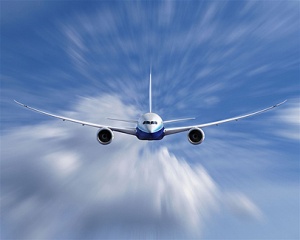Swine flu adds to aviation slide, says IATA

The International Air Transport Association said weak passenger demand and falling yields pushed revenue and traffic on international markets down in June, but reported signs of stabilization in the market.
IATA, which represents 230 airlines comprising 93% of scheduled global traffic, said passenger demand fell 7.2% in June, but this was a marginal improvement on the 9.3% fall in May.
Most worryingly though, June revenue on international markets fell by a “shocking” 25-30% with a 16.5% slump in cargo freight contributing significantly to the woes. Load factors fell 2.3% to 75.3%.
“International passenger demand remains very weak,” said Giovanni Bisignani, IATA’s Director General and Chief Executive. “While it appears that there is stabilization in some markets, this comes at a steep price.”
Panic over swine flu hurt the Asia-Pacific region hard, with carriers recording an annual decline of 14.5% in June.
ADVERTISEMENT
North American airlines reported a 6.7% annual decline in June. Load factors were the highest across all regions at 82.6% but that came at a 29% drop in revenue as carriers reduced demand.
Traffic for European carriers fell 7.1% in the month, an improvement on the 9.4% decline in May, while load factor stood at 77.3%.
Latin American airlines posted a 4.7% fall in passenger demand, and IATA said there were early indications that the region is starting to recover from the swine flu which hit the region severely in May. Mexican carriers reported a 25% decline in demand compared to June 08, an improvement from the 40% drop in May.
African carriers also struggled with a 5.9% annual fall in demand on international routes.
The Middle East was the only region of growth, with demand increasing 12.9%. Carriers increased capacity 15.2%, with particularly strong traffic growth on routes to Europe and Asia.
Freight demand remained relatively stable, but at a level 16.5% lower than the same month last year.
Asia-Pacific airlines reported a 15.8% drop in June, an improvement on the 18.1% fall in May. This reflects improved economic conditions in a number of emerging Asian economies, such as China.
European carriers saw the weakest demand for freight in June at -20.3%, even worse than the -19.2% experienced in May. North American carriers reported a 18.6% fall in June demand, relatively unchanged from the 18.8% fall in May.
Middle Eastern carriers reported a -4.2% decline in freight demand resulting in a 40.2% load factor.
African carriers saw demand decline by 20.2% while Latin American carriers saw demand fall by 14.2%. Freight load factors in these regions were the lowest at 26.6% and 31.6% respectively.
“These are extremely challenging times for airlines. There are no signs of an early economic recovery. Other external risks are potentially great, including rising oil prices and the impact of Influenza A(H1N1) on demand. Cash flow is threatened by weak demand, exaggerated by fare discounting. And, after years of cost reduction, the scope for further cuts is limited,” Bisignani concluded.

